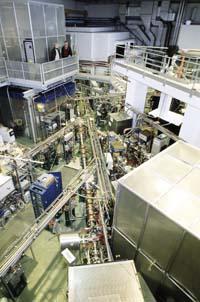Unexpected fission

CERN detects a reaction that has "ignored" all forecasts
An unexpected fission has been detected in the particle physics laboratory at CERN in Geneva. The creation of two nuclei of different mass in the fission of the element mercury 180 has shown that much remains to be solved in the fields of the nuclei and the fission. In fact, according to two models describing nuclear fission (liquid drop model and nuclear layer model), the fission of mercury atoms should be symmetrical, so it should give two equal nuclei.
Nuclear fission means the division of a heavy core into two lighter cores. The liquid drop model equates the cores to the water drops, indicating that the energy level of the cores depends on their surface tension and the repulsion force between the protons. He says that in fission the core should be divided into two equal parts.
According to the nuclear model of the layers, when fission occurs there is more chance of forming certain atoms. In fact, atoms with more stable cores are the ones that have the most possibilities to create. This model indicates that in the nucleus protons and neutrons are arranged in layers, so those with a certain number of protons and/or neutrons are more stable. These numbers, called magic numbers, are: 2, 8, 20, 28, 50, 82, 126...
Based on these models, CERN scientists expected two zirconium atoms from each of the 180 mercury. In fact, in the nuclei of the 90 zirconium atoms the number of neutrons is magical (50) and the number of protons is semi-magical (40). However, after the fission of mercury 180, the atoms of ruthenium-100 and crypto-80 were identified, two atoms without magic numbers.
Buletina
Bidali zure helbide elektronikoa eta jaso asteroko buletina zure sarrera-ontzian











